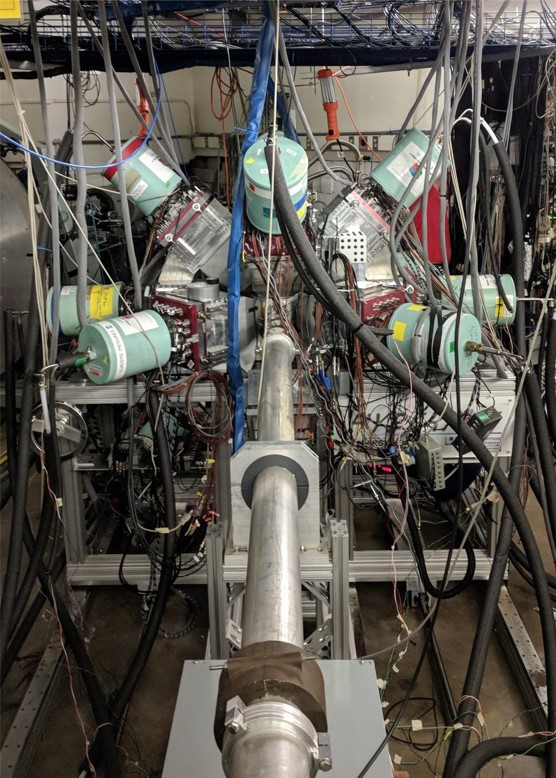
Stellar nucleosynthesis processes involve thousands of reactions for which the cross sections need to be described using theoretical models. For a wide variety of processes, e.g. p-, s- and r- process the nucleosynthesis path runs through heavy nuclei, thus statistical Hauser-Feshbach (HF) models can be applied to describe the cross sections. HF models requires as input, among others, γ-strength (γSF) and level density (LD) functions, and optical model potential (OMP). A wide variety of models that describe these quantities (see e.g. TALYS code), results in cross sections predictions that can vary even by an order of magnitude, resulting in large uncertainties in network calculations of the nucleosynthesis processes.
The Oslo method provides a well established tool to extract theγSF and LD from experimental data. Such measurements allow for constraining the inputs for the HF models and as a result minimize the uncertainties in the network calculations. The Oslo-type experiments require simultaneous measurement of the γ rays and the excitation energy of the produced nucleus. This is typically done using scintillator detectors and particle telescopes. The Oslo-type experiments have shown that theγSF exhibits an unanticipated behavior at lower energies: the so-called upbend. This feature has been shown to exist in nuclei as heavy as 138La. However, the scintillators do not allow for extraction of the gSF below 1 MeV. Thus for heavier nuclei, where the upbend shifts towards lower gamma-ray energies, the results from experiments using scintillator detectors are inconclusive, as they do not probe the gSF far enough.
The Hyperion (previously STARLiTeR) array at the Cyclotron Institute of Texas A&M University provides a unique environment to perform Oslo-type experiments using Compton suppressed clover detectors combined with a DE-E telescope. The Compton suppression of the gamma-detectors is a key to extending the lower limit of theγSF measurements even to 0.5 MeV, which unravels the features that could not be observed during traditional Oslo-type experiments. A first experiment performed using the STARLiTeR array for 152,154Sm(p,d)151,153Sm revealed an upbend in the heaviest investigated nucleus so far. Recently, measurements with Hyperion showed the upbend in other rare earth nuclei.
Jes Koros explaining what Hyperion is:

